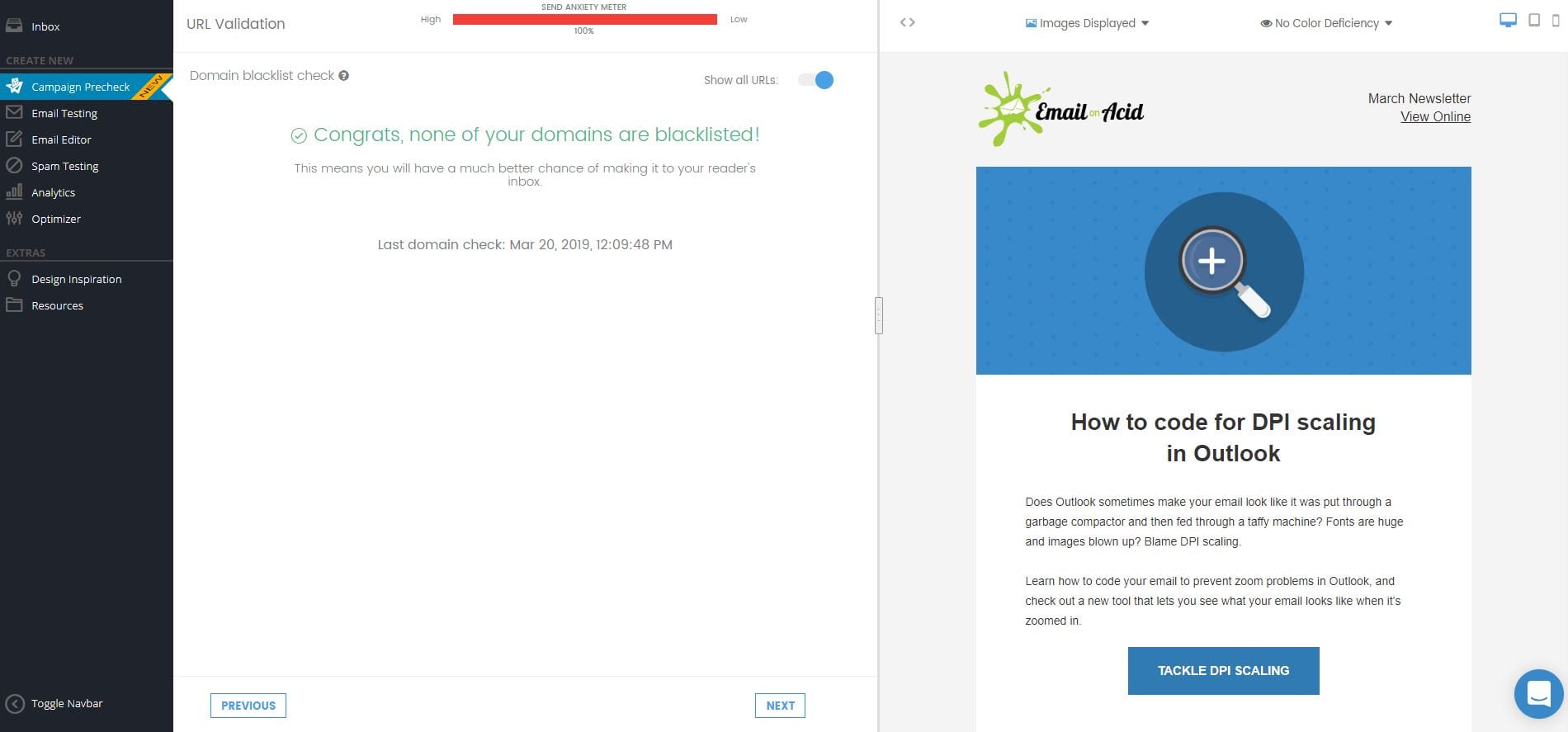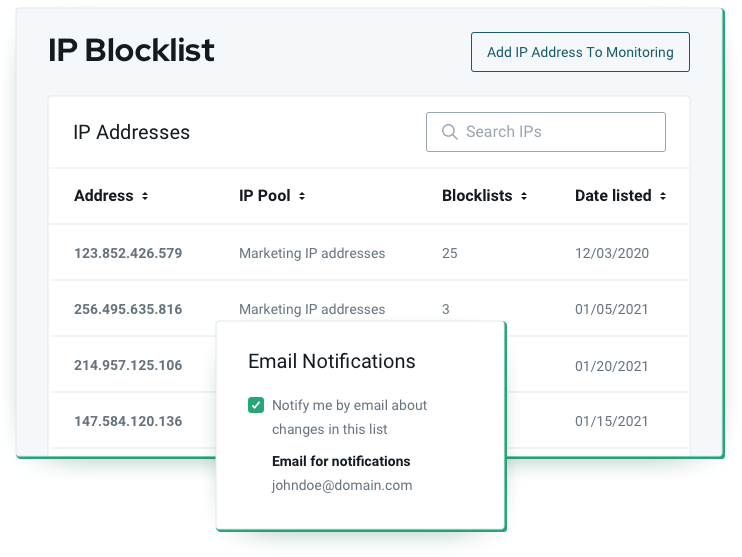Email Deliverability
Email Blocklists: What They Are and How to Avoid Them

Email Deliverability

We’ve said it once, and we’ll probably say it 100 times more: email deliverability is the elephant in the room for email marketing.
Blocklists play a significant role in deliverability. And as far as blocklists are concerned, email content isn’t the only factor determining if a domain is blocklisted.
In this post, we’ll go over what a blocklist is, how domains end up on blocklists, how to delist a domain name, and some best practices to avoid landing on the blocklist.
A blocklist is a collection of IP addresses, email addresses, or domains that have been flagged as sources of spam messages or harmful content. Email clients, email service providers (ESPs), and email servers usually block messages from domains or addresses on IP blocklists. Internet service providers (ISPs) sometimes prevent users from accessing blocklisted websites.
Some popular blocklists include:
Email blocklists may also be referred to as blacklists. However, most of the email industry has moved away from using this term to avoid unintentional negative connotations.
The goal of a blocklist is to protect users against spammy, malicious, or harmful content. Here are some common reasons why a domain might land on the blocklist:
Keep in mind that blocklists can flag domains and email addresses with good intentions. Plenty of domains land on blocklists, even if they’re steps to avoid them. Luckily, blocklisting is usually temporary.
Running a domain blocklist check on your email or domain helps find whether your domain (or other domains in your message) is on a blocklist. You can run your domains manually through individual blocklists or save some time by using a tool that checks your email against multiple blocklists at once.
In Email on Acid’s Campaign Precheck, you can use a domain blocklist check against four major blocklist services: Spamhaus, Phishtank, Google Transparency Report, and URIBL. We’ll let you know if your domains are on any blocklists.

Email on Acid’s tool helps you catch blocklisting issues before you send a campaign. But Mailgun Optimize takes things a bit further with Deliverability Monitoring. You don’t want to find out you’ve been blocklisted right before you launch a big campaign, so our Mailgun Optimize suite is the perfect solution as it lets you keep tabs on multiple IPs at all times.

If you find yourself with a blocklisted domain, most blocklists offer advice for delisting your domain. Spamhaus, for example, offers a “Blocklist Removal Center” where you can enter your IP address or domain name and find information on how to get off the blocklist.
Mailgun Optimize Deliverability Monitoring also offers actionable advice if you’re blocklisted, so you’re delisted as soon as possible.
After delisting, you may want to look at your email content and follow our best practices for sending emails. Check out our list of do’s and don’ts below.
Do:
Don’t:
Aside from content, you can use email authentication protocols to avoid landing on a blocklist. That includes DomainKeys Identified Mail (DKIM), Sender Policy Framework (SPF), and Domain-based Message Authentication, Reporting and Conformance (DMARC). These help the mailbox provider confirm that the message is legitimate and coming from a trusted sender.
Besides following the best practices above, we have one last piece of advice for avoiding landing on a blocklist: run spam tests and monitor deliverability!
Always run spam tests and blocklist checks, even if you’ve sent the email before. Spam filters and blocklists are always changing and updating, so an email that made it to the inbox yesterday could be spam tomorrow.
With Email on Acid’s Spam Testing, you can check your emai against the most common spam filters and blocklists to ensure your message reaches the inbox. Then, get super serious about deliverability with Mailgun Optimize, including ongoing blocklist monitoring for multiple IP addresses.
We’ve said it once, and we’ll probably say it 100 times more: email deliverability is the elephant in the room for email marketing.
Blocklists play a significant role in deliverability. And as far as blocklists are concerned, email content isn’t the only factor determining if a domain is blocklisted.
In this post, we’ll go over what a blocklist is, how domains end up on blocklists, how to delist a domain name, and some best practices to avoid landing on the blocklist.
This post was updated on September 21, 2022. It was first published in March 2019.